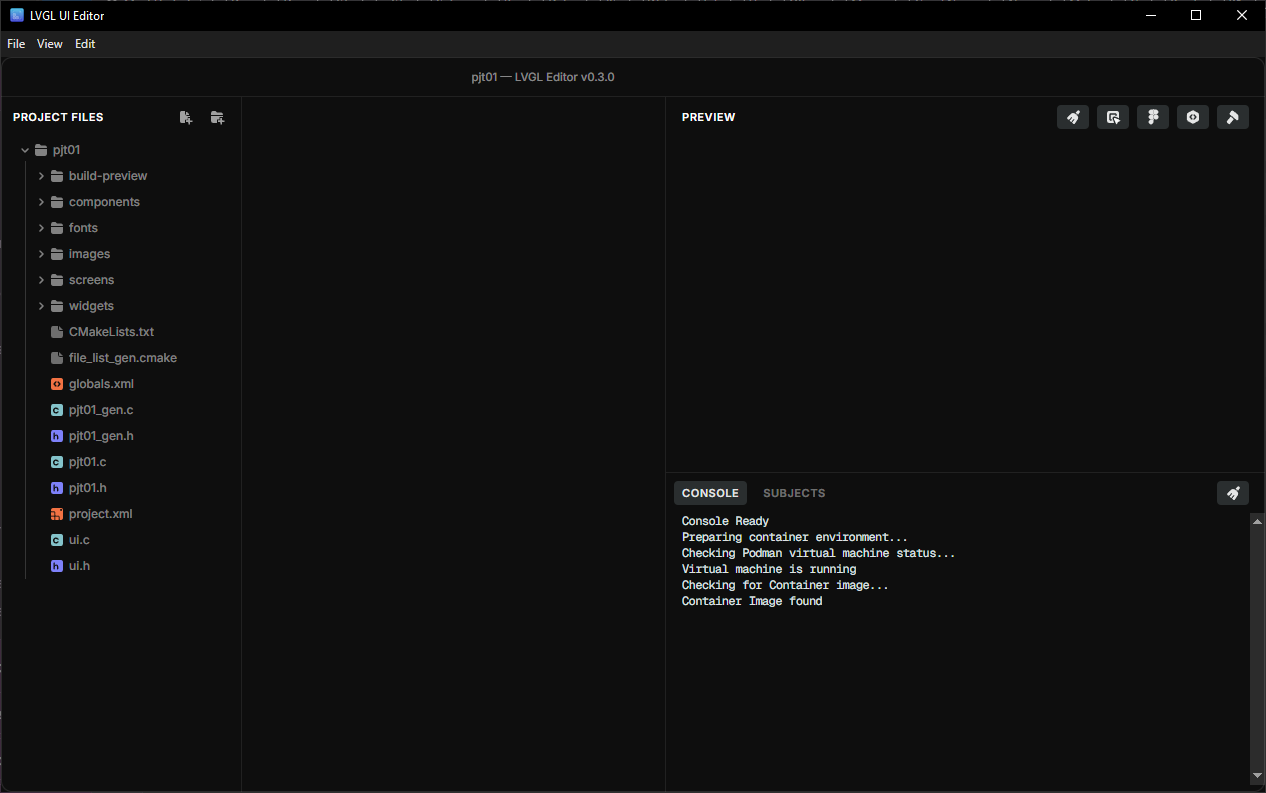Overview¶

LVGL Pro User Interface
Reasons to Use LVGL Pro¶
Shorter Development¶
LVGL Pro accelerates UI development by
giving you an instant view of your additions and changes,
converting Figma designs to LVGL,
making it easy to share your UI screens online,
helping you to write UI tests, and
integrating your UI via command-line interface.
Different Skill Sets¶
LVGL Pro allows UI designers to efficiently contribute finished UI components to firmware projects without having to be C programmers.
Live Collaboration¶
With LVGL Pro, the turn-around time between UI changes and seeing the actual results can be reduced to mere seconds, making it practical for UI design, development and business teams to collaborate on UI content in real time.
Based Around XML¶
LVGL Pro defines your UI components and screens using XML. Enjoy autocompletion for fast editing, seamless version control, and easy integration with external tools, including AI assistants.
Runtime XML Loading¶
Export your UI to C code, or load the XML files directly at runtime, requiring no re-flashing. Assets (images, fonts, etc.) and XML UI component definitions can be read from an SD card, Wi-Fi, serial port, or any other input source.
Interactive Preview¶
See changes instantly as you type XML, drag, or resize Widgets. Live preview of the results gives a WYSIWYG experience, similar to browser inspector tools.
Figma Integration¶
Use the LVGL Figma plug-in to import style properties and images as XML code. It also supports automatic downloading of linked styles and images.
Built-In Testing¶
Tests of the resulting UI can be built in: simulate clicks, waits, and screenshot comparisons against to instantly prove the UI is working as expected, or quickly highlighting anything that needs attention. Using testing this way is a great way to build up an automated and thorough regression-testing pipeline, supporting high confidence with every firmware release, small or large.
CLI Integration¶
All parts of the development sequence, including code-generation, Figma sync, XML validation, and test execution, is available in a CLI tool, ready to integrate into your workflow.
Favorite Platform¶
LVGL Pro comes in Linux, Windows, and macOS flavors so your team will have few, if any, technical barriers to begin using it.
Ways to Run It¶
Stand-Alone Application
VSCode Extension
On-line (via web browser)
User Interface¶
Project Files Pane¶
The left panel is a typical "project-tree" navigation panel. It allows you to efficiently and conveniently:
observe the structure of your project files,
create, delete and rename project files,
find and open files into the editor area.
The subdirectories shown in the project are for the respective type of UI components (i.e. Screens, Widgets, Components, Fonts and Images).
Editor Pane¶
The Editor Pane appears in the middle of the window. This is where you make the
LVGL Pro do valuable work for you, building your UI or Component Library. It is here that you can observe and edit the contents of any file in your project, but its specialty is editing XML content that defines UI components (Widgets, Components and Screens). While editing XML, LVGL Pro has an extensive "IntelliSense-like" User Interface, which makes defining and editing UI components a breeze. Similar to context-sensitive assistance available in other "smart editors", the Editor Pane assists you with almost every keystroke, considerably shortening the learning curve required to produce finished, professional-quality UIs with LVGL Pro.
Right Panel¶
Preview Pane¶
When the Editor Pane is editing an XML file defining a Component or Widget, the Preview Pane shows a live preview of your XML UI definition, pushed through real LVGL rendering so you can instantly see the results of your work, that will match the final result produced by firmware, pixel-for-pixel.
Output Pane¶
The Output Pane consists of a number of tabs where you can see various types of current lists and results.
The Console Tab contains "log output" of the internal actions taken and their results.
The Subjects Tab contains list of the Observer-Pattern Subjects implemented in your XML source files. Each Subject represents a single "datum" in the application, that UI elements (Widgets and Components) can "observe" and reflect visually. See Binding to Data for more details.
Coming Soon: Tests, Translations, Animations